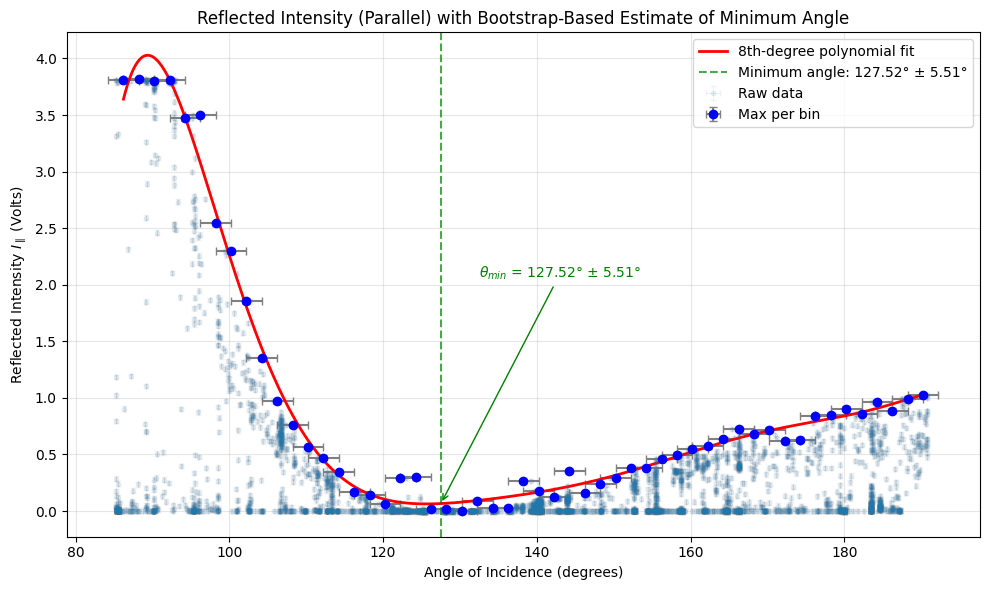Various Physics Experiments

Overview
As part of the Engineering Science curriculum, I took 3 physics courses: PHY180 (Classical Mechanics), PHY293 (Waves & Modern Physics), and PHY294 (Quantum & Thermal Physics). Here are various physics experiments I did in each course and my reports on them.
PHY180
Pendulum - Paper
For PHY180, I wrote a paper on the physics of a simple pendulum. I investigated the roughly parabolic correlation between a pendulum's drop angle and its period. I then analyzed how the pendulum's amplitude decays over time, which closely followed an exponential function when dropped from low enough angles. From this, I calculated the Quality Factor to quantify damping. Finally, I explored how changing the pendulum's length affects its motion, finding that while length doesn't significantly affect the Q factor, the period increases approximately with a power-law relationship.
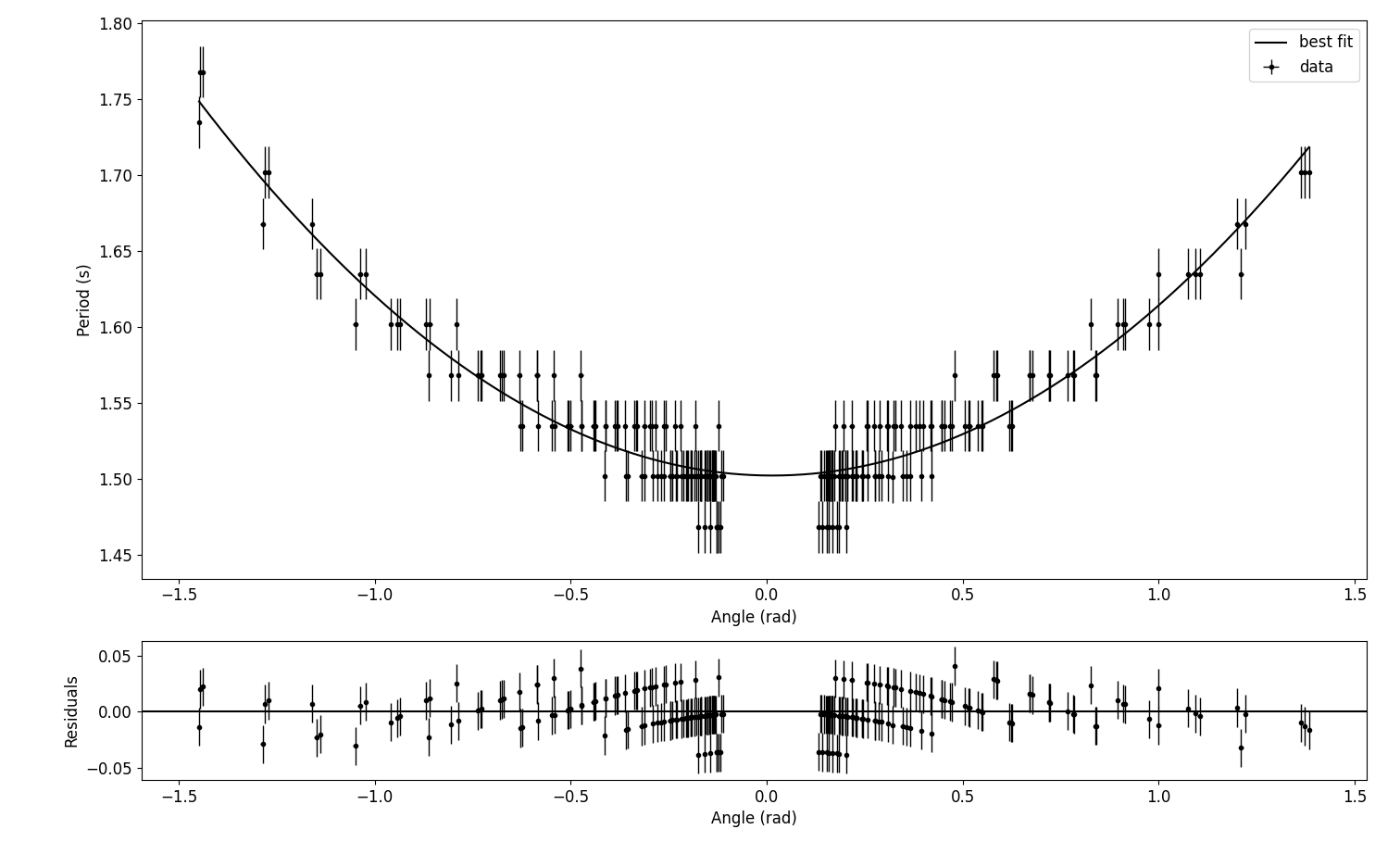
PHY293
Charge-to-Mass Ratio for the Electron - Paper
The charge-to-mass ratio (e/m) of the electron is a fundamental property first measured by J. J. Thomson in 1895, highlighting the behavior of charged particles under electromagnetic forces. In this experiment, the motion of an electron in a uniform magnetic field is studied to determine its e/m ratio.
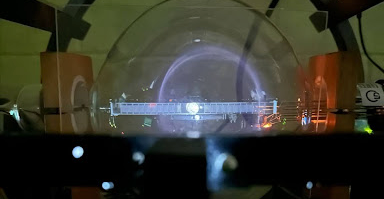
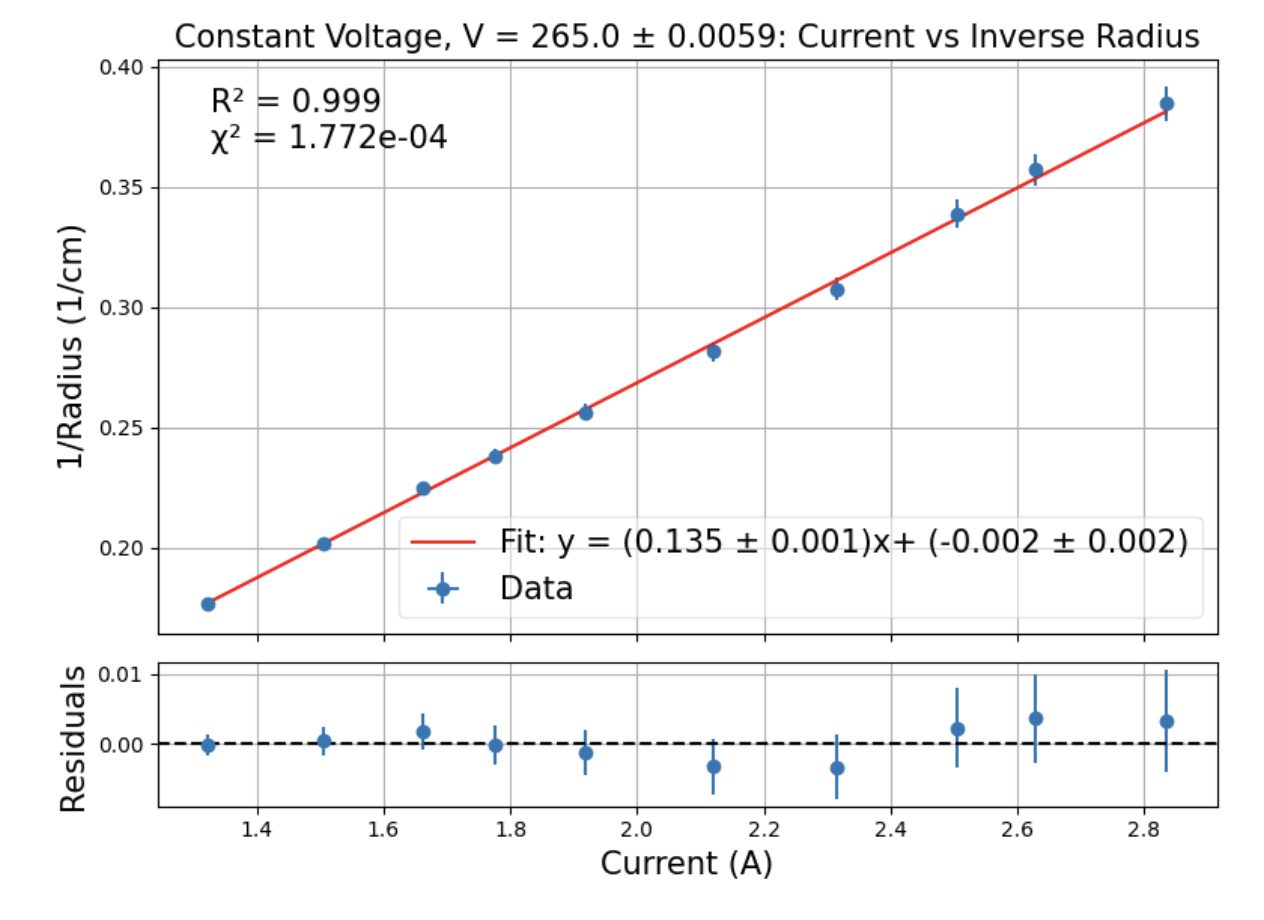
Interferometry - Paper
For the second experiment in PHY293, I measured the wavelength of green and red light using interferometry with a Michelson interferometer. This is a precise technique for measuring small distances, wavelengths, and material properties through light interference patterns. In a Michelson interferometer, light is split into two paths. One directed toward a fixed mirror and the other toward a movable mirror. When these beams recombine, they create an interference pattern with many fringes, sensitive to path length changes. Counting the number of fringes that pass by as the mirror moves allows us to calculate the wavelength of the light.
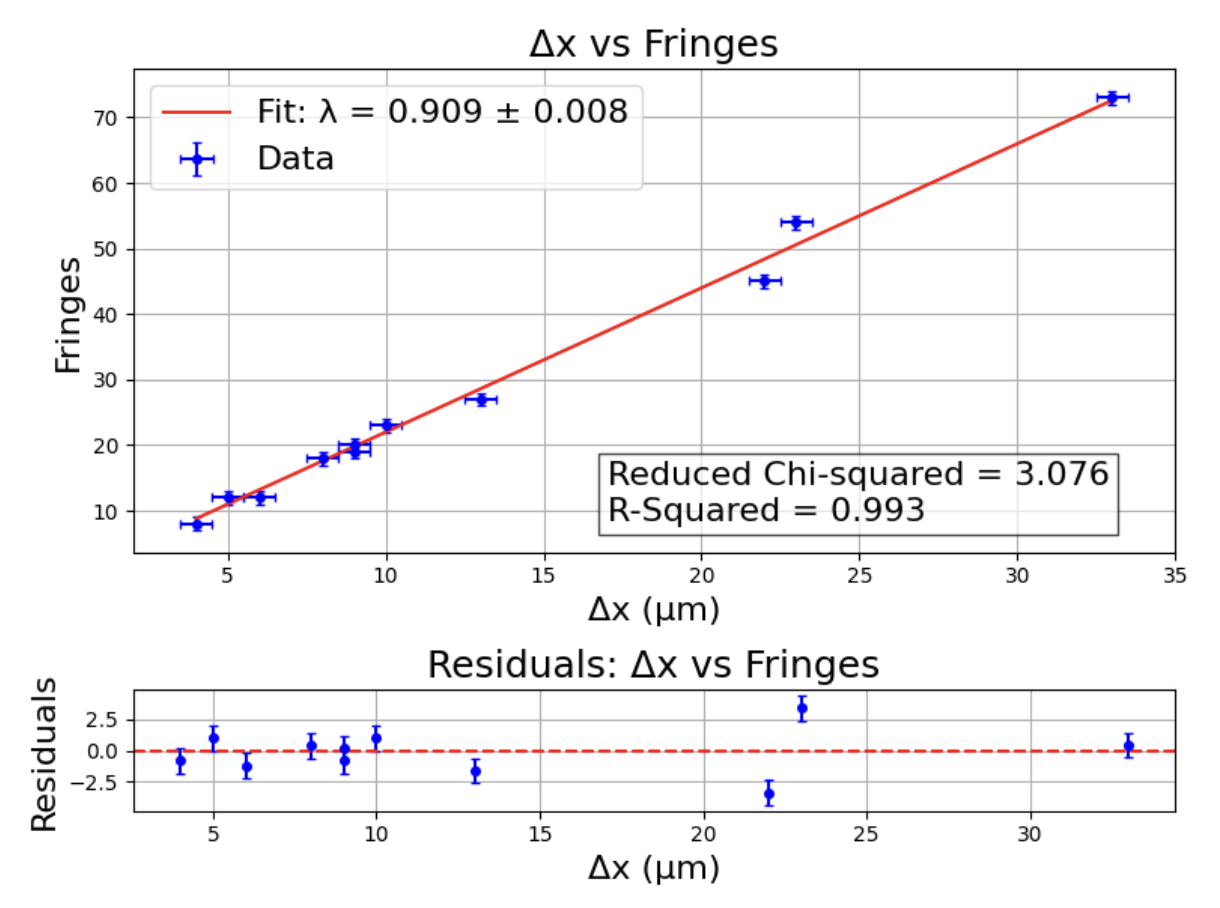
PHY294
Rydberg Constant - Paper
In this experiment, we measured the spectral lines of hydrogen using a spectrometer to experimentally determine the Rydberg constant. By observing the Balmer series and plotting the inverse of the squared wavelengths, we obtained a linear relationship that allowed us to extract an experimental Rydberg constant within acceptable uncertainty of the theoretical value. This experiment reinforced the quantized nature of atomic energy levels and the predictive power of the Bohr model.
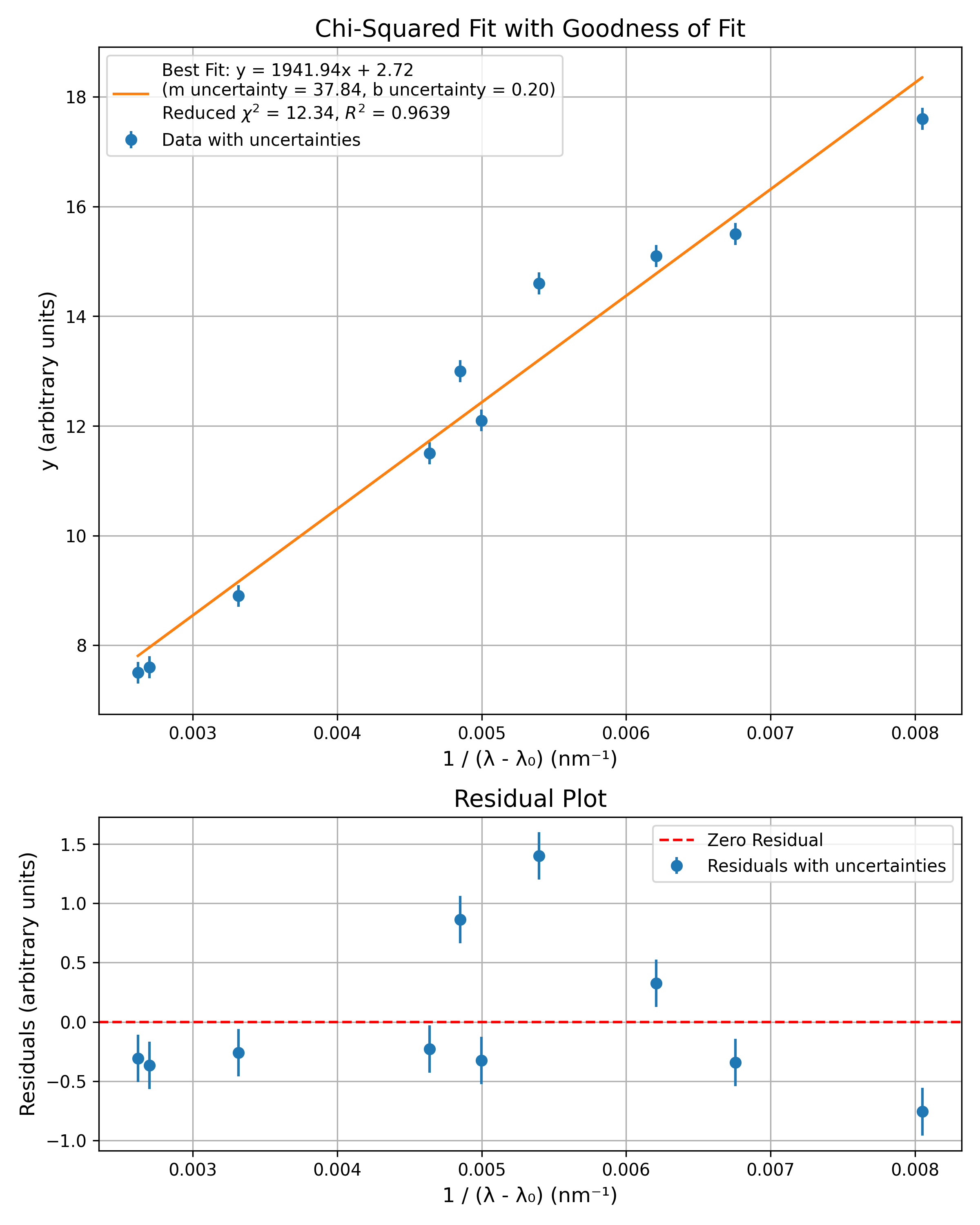
Photoelectric Effect - Paper
We investigated the photoelectric effect to determine Planck's constant and verify Einstein's equation. By measuring the stopping voltage for various light frequencies, we found a linear relationship consistent with the photon theory of light. The slope and intercept of the fitted data yielded values for Planck's constant and the work function of the photocathode material. We also confirmed that stopping potential is independent of light intensity, while photocurrent scales with it, further supporting the quantum description of light.
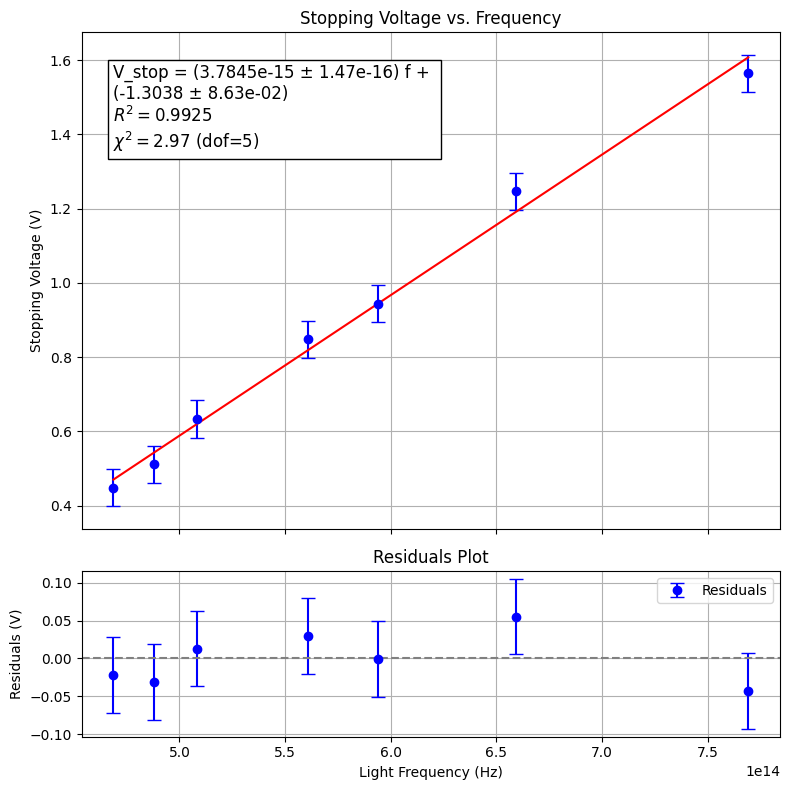
Polarization of Light - Paper
This lab explored three core concepts in light polarization: Malus' Law, the effect of inserting a third polarizer, and Brewster's angle. Using a diode laser, polarizers, and a photodetector, we experimentally verified the cos²θ relationship predicted by Malus' Law and observed sinusoidal transmission through three polarizers. We also estimated the Brewster angle for acrylic using reflected light intensity data and bootstrapping to quantify uncertainty, enabling the calculation of its refractive index.
